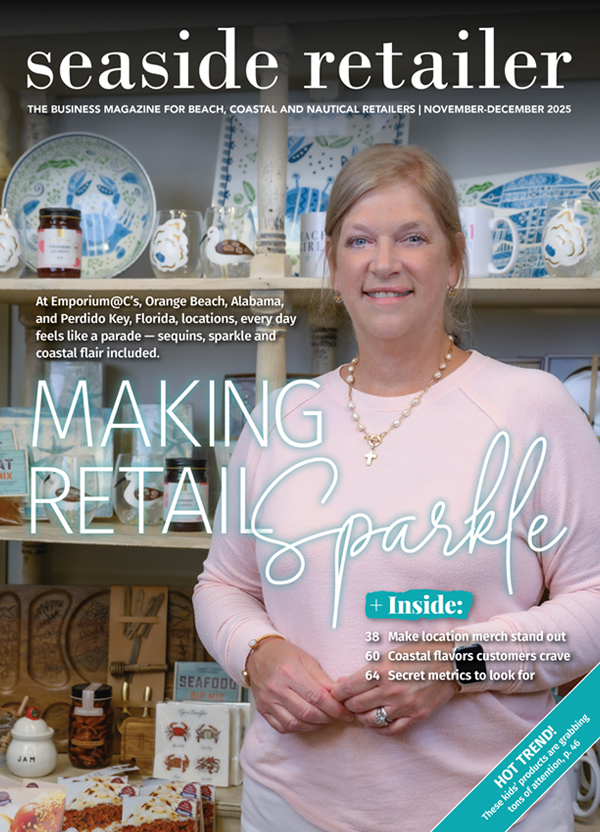
A few months ago, I was waiting in line inside my local credit union when I noticed a new teller was working. I’ve been a member of this financial institution for many years, so I know there will be a short period of time for the new employee to get to know me. But when I got to the window and provided the young woman with my account number, she immediately began addressing me by name.
The same thing happened on my next visit. By my third visit she called me by name as I walked up to the window without looking at my account number. Her recognition of my name made me feel important to her and respected. And it is because of this type of treatment by employees that I’ve continued to do business with this credit union.
This same level of recognition can be used to make customers at your seaside store also feel special. As Dale Carnegie said, “A person’s name is to that person the sweetest, most important sound in any language.” Research has shown that there is a particular neuro-chemical reaction that takes place in our brains when we hear our own name.
If you and your team members are not regularly using the names of your customers, you are missing out on a technique that can help build a lasting relationship with them.
If you and your team members are not regularly using the names of your customers, you are missing out on a technique that can help build a lasting relationship with them.
Having a hard time remembering a name? You and your employees can easily obtain that information by reading it off his or her check or credit card when they check out. “Thank you, Tom, for your purchase. We look forward to seeing you again soon.”
And when in doubt, simply ask. A straightforward way to do this is to use the fill-in-the-blank method. It works like this: “My name is Tom, and your name is?” When given a partially finished statement, there is a strong tendency for the brain to want to complete it.
Once you get that person’s name, use it in the conversation a few times, just don’t overdo it.
Some customers only come in once or twice and you never see them again. Others are regulars who come back again and again. Regardless of which types of customers they are, it is to your advantage that you find out and use their names. It lets them feel like they are no longer a stranger in your store, but someone familiar.
If you or your employees are having trouble remembering some customers’ names, it helps to write them down. Jennifer with the long blond hair is always looking for gifts to send to family members in Ohio, and John with the dark, curly hair comes in once a month looking for new graphic tees and activewear.
Review the list from time to time. Watch how their faces light up with a smile the next time they come in and you greet them by name. You’ll be surprised and delighted at how easy you will be able to build a sincere rapport and loyalty with Jennifer, John and all the other patrons you address by name.

